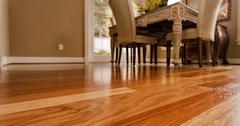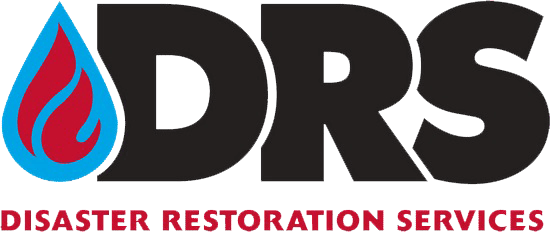
Hardwood floors bring timeless elegance and warmth to any home, but when confronted with water damage, the dilemma arises – should you salvage the existing floor or opt for a complete replacement? In this in-depth exploration, we'll unravel the nuances of dealing with water-damaged hardwood floors, examining the factors that influence the decision between salvaging and replacement. By understanding the complexities involved, homeowners can make informed choices to retain the beauty of their hardwood floors while addressing the challenges posed by water damage.
Understanding the Impact of Water Damage on Hardwood Floors
Water damage is a formidable adversary to hardwood floors. Wood is porous, and when exposed to excess moisture, it can absorb water, leading to a range of issues:
-
Swelling: Wood fibers absorb water and swell, causing boards to expand. This can result in cupping, where the edges of the boards are higher than the center.
-
Warping: Excessive moisture can lead to warping, where the boards twist or curve out of shape. This compromises the structural integrity of the floor.
-
Mold and Mildew: Damp conditions create an ideal environment for mold and mildew growth. This not only affects the appearance of the floor but also poses health risks.
-
Discoloration: Water damage can cause hardwood floors to discolor, leading to stains and an overall unappealing appearance.
Assessing the Extent of Water Damage
Source and Duration:
Identify the source of water damage and how long the floor has been exposed. Quick action is essential to minimize damage, but prolonged exposure may lead to irreparable issues.
Type of Water:
The type of water involved matters. Clean water from a burst pipe poses a different set of challenges than contaminated water from floods or sewage backups. Contaminated water may necessitate complete replacement for health and safety reasons.
Severity of Damage:
Assess the severity of damage, considering factors like cupping, warping, and mold growth. Superficial damage may be easier to address than extensive structural issues.
Salvaging Hardwood Floors
Immediate Action:
Swift action is crucial. Begin by removing standing water and drying the affected area promptly. Use fans, dehumidifiers, and proper ventilation to expedite the drying process.
Evaluate Cupping and Warping:
Cupped or warped boards may be salvaged through a process called "flooding." This involves adding moisture to the concave side to encourage even drying. However, success depends on the extent of the damage.
Sanding and Refinishing:
If the damage is limited to the finish, sanding and refinishing the hardwood floor may be sufficient. This can restore the aesthetic appeal and protect the wood from further damage.
Spot Repairs:
In cases of localized damage, spot repairs may be an option. This involves replacing individual boards or sections rather than the entire floor.
Bleaching for Stains:
Stains caused by water damage can sometimes be mitigated through bleaching techniques. This involves lightening the affected area to match the surrounding floor.
Professional Assessment:
Engage the services of a professional flooring specialist to assess the extent of the damage and recommend suitable salvaging measures. Their expertise can help determine if the floor is salvageable and guide the restoration process.
Replacement Considerations
Severe Structural Damage:
If the water damage has led to severe structural issues like widespread warping, buckling, or compromised subflooring, replacement may be the only viable option.
Contaminated Water:
If the water source is contaminated, replacement is often recommended for health and safety reasons. Contaminated water can introduce pathogens and contaminants that are challenging to eliminate entirely.
Mold and Mildew Infestation:
Extensive mold and mildew growth may necessitate replacement, as these organisms can compromise indoor air quality and pose health risks.
Financial Considerations:
Assess the cost of restoration versus replacement. In some cases, the extent of damage or the cost of salvaging may make replacement a more practical and cost-effective choice.
Desire for a New Look:
Water damage may provide an opportunity to reimagine your space. If you were considering a change in flooring or décor, this might be the perfect time for a fresh start with a new hardwood floor.
Insurance Coverage:
Consult your insurance policy to understand coverage for water damage. In some cases, insurance may cover the cost of replacement, making it a more feasible option.
Combining Salvaging and Replacement
Selective Replacement:
In cases where damage is localized, consider selective replacement. Remove and replace only the affected sections, blending them seamlessly with the salvaged portions.
Incorporating New Elements:
Blend salvaged and new elements strategically. This can create a unique aesthetic, preserving the character of the existing floor while introducing fresh elements.
Post-Restoration Maintenance
Enhanced Sealants:
After salvaging or replacing hardwood floors, consider applying enhanced sealants to provide an additional layer of protection against future water damage.
Regular Inspections:
Schedule regular inspections of your hardwood floors, especially in areas prone to water exposure. Early detection of issues can prevent extensive damage.
Prompt Cleanup:
Address spills or water leaks promptly to prevent prolonged exposure and minimize the risk of damage.
Conclusion: Balancing Restoration and Renewal
The decision between salvaging and replacing water-damaged hardwood floors requires a careful balance of practical considerations and aesthetic preferences. Swift action, a thorough assessment of the damage, and professional guidance are key elements in determining the most suitable course of action. Whether you choose to salvage the existing floor, opt for replacement, or blend the two approaches, the goal is to preserve the inherent beauty of hardwood floors while ensuring a durable and resilient living space. By navigating the complexities of water damage restoration with a well-informed approach, homeowners can make choices that not only address the challenges at hand but also contribute to the long-term beauty and functionality of their homes.
